The Economics and Statistics Division maintains archives of previous publications for accountability purposes, but makes no updates to keep these documents current with the latest data revisions from Statistics Canada. As a result, information in older documents may not be accurate. Please exercise caution when referring to older documents. For the latest information and historical data, please contact the individual listed to the right.
<--- Return to Archive
For additional information relating to this article, please contact:
May 30, 2022SURVEY ON BUSINESS CONDITIONS: Q2 2022 Statistics Canada has conducted its ninth iteration of the Canadian Survey on Business Conditions. In April and early May, Statistics Canada surveyed businesses to collect information on businesses' expectations, obstacles, financing and plans as the economy continues to move beyond COVID-19.
The results reported here are a selection of the impacts found for Nova Scotia businesses, by industry, by size of business (measured by number of employees), by age of business and by urban or rural location. There are comparisons of the Nova Scotia average (all industries, ages, sizes, locations) with the national and provincial averages. The horizontal axis in all charts measures the share of businesses reporting each outcome. The total for many outcomes does not add to 100% of respondent businesses as many replied that the outcome was not applicable in their circumstances.
Business conditions vs pre-pandemic (2019)
Compared with 2019, about two thirds of Nova Scotia's businesses report that conditions are the same or better than in 2019. However, 22.6% of Nova Scotia businesses report that conditions are still worse than in 2019. The strongest conditions were reported in Nova Scotia's finance/insurance and professional/technical services businesses. A higher proportion of Nova Scotia's accommodation/food businesses reported worse conditions in 2022 than in 2019.
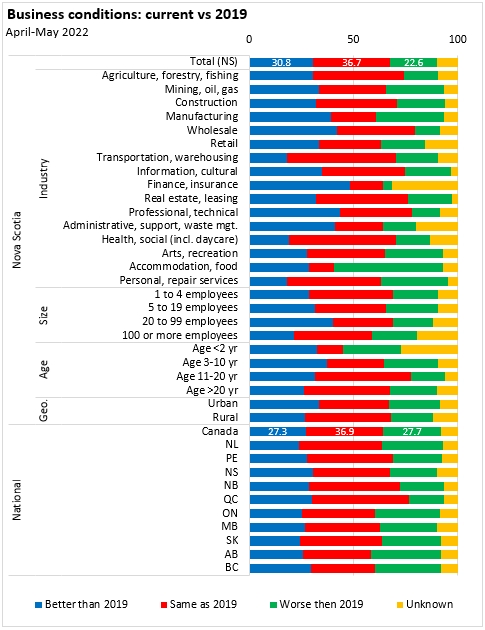
Business expectations for the next three months
The outlook for employment was stable for 73.0% of Nova Scotia businesses in the next three months. Rising employment is expected among 23.3% of Nova Scotia businesses while declining employment is expected by just 3.7% of Nova Scotia businesses.

59.7% of Nova Scotia businesses expect stable job vacancies (50.4% nationally) while 9.5% expect rising job vacancies and 5.0% expect falling vacancies. Across Canada, 8.8% of businesses expect rising job vacancies and 6.1% expect falling vacancies.

86.0% of Nova Scotia businesses expect stable or rising sales while 9.3% expect a decline.

Rising prices were expected by 44.9% of Nova Scotia businesses while 47.1% expected stable prices. Only 3.2% expected price declines.
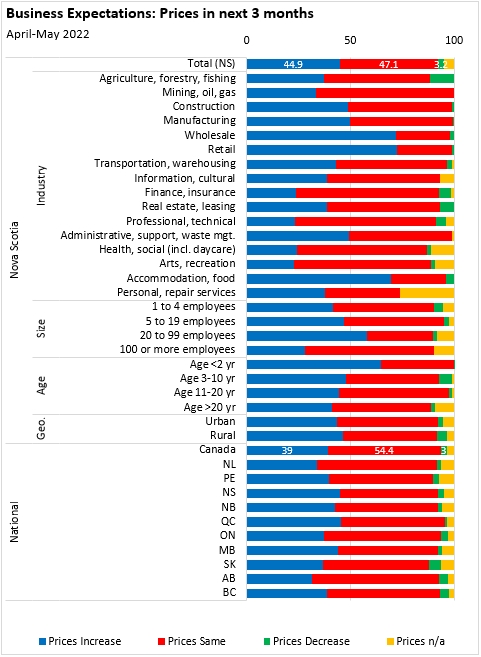
Just over 60% of Nova Scotia businesses expected stable demand while 33.5% expected a rise in demand and 6.4% expected a fall in demand.
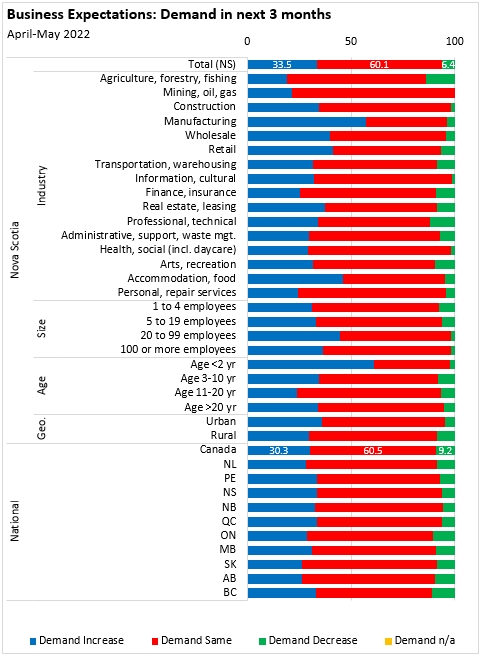
Business profitability is expected to remain the same for 52.4% of Nova Scotia businesses in the next three months while 16.9% expect rising profitability and 27.4% expect decreasing profitability. Rising profitability is expected more in Nova Scotia's administrative/support services (which includes call centres) and finance/insurance businesses. Decreasing profitability expectations were more prevalent in Nova Scotia's accommodation/food and agriculture/forestry/fishing businesses.

Obstacles for businesses
As part of the Survey of Business Conditions, businesses were asked about their obstacles. 19.6% of Nova Scotia businesses reported no substantial obstacles expected in the next three months. Businesses in Nova Scotia's finance/insurance, real estate/leasing and professional/technical services industries were more likely to report no substantial obstacles. Across Canada, 18.0% of businesses reported no obstacles.
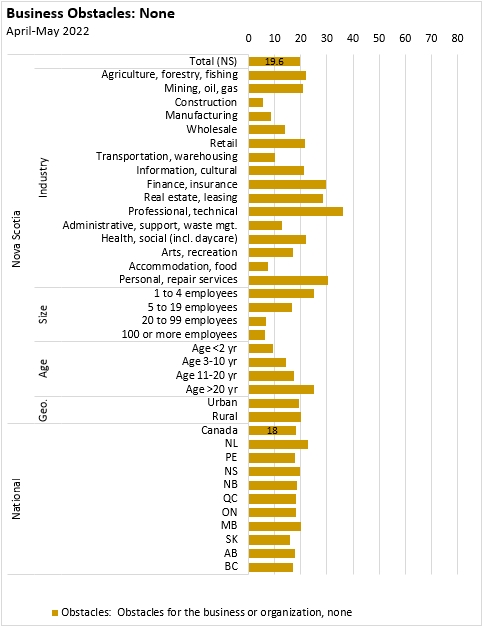
Cost factors were among the most commonly cited obstacles by Nova Scotia businesses, including rising input costs (49.8%), insurance costs (36.6%) and transportation costs (41.3%).
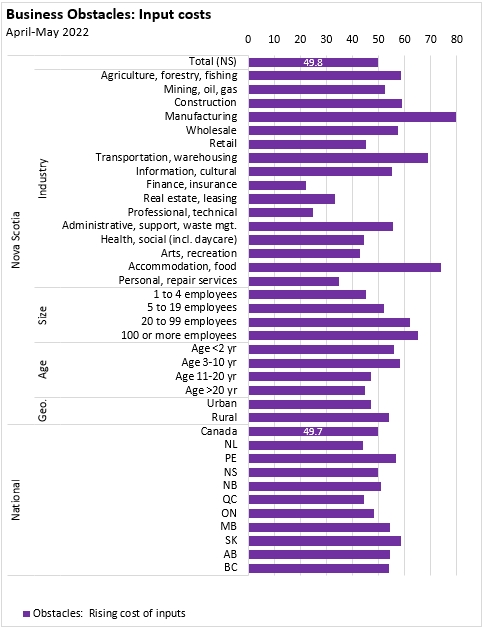

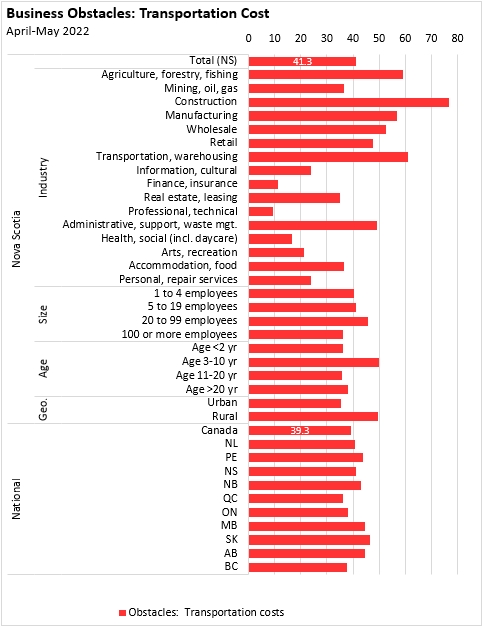
Domestic input sourcing was noted as a challenge for 31.4% of Nova Scotia businesses while international input sourcing was an obstacle for 12.8%. Maintaining inventory levels was an obstacle for 20.6% of Nova Scotia businesses (notably retail).
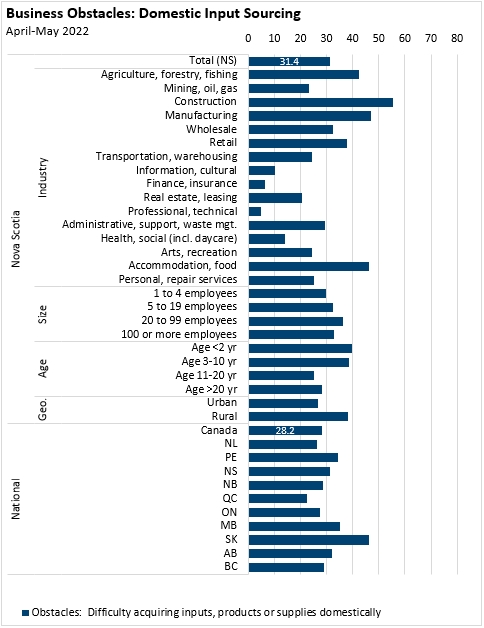
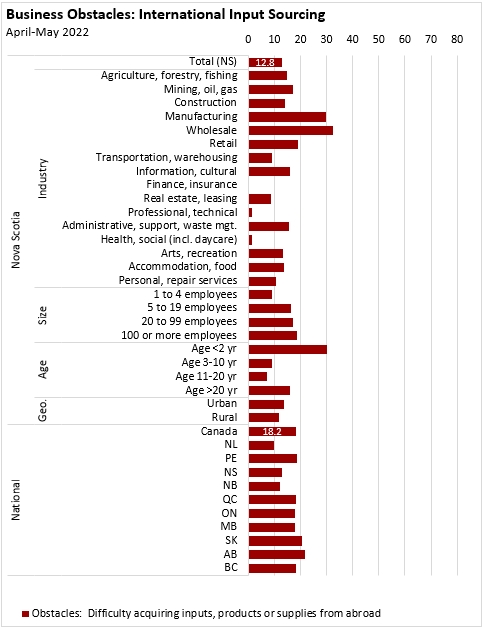

Labour shortages were noted as obstacles for 35.6% of Nova Scotia businesses. Recruiting skilled employees (35.4%) was a more commonly-noted obstacle than retaining skilled employees (30.1%).
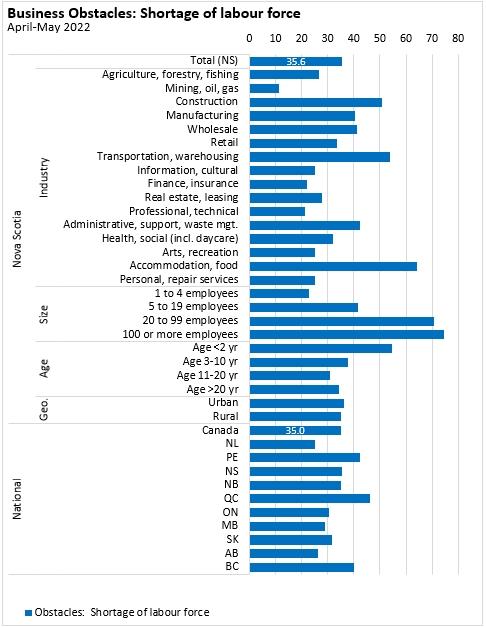
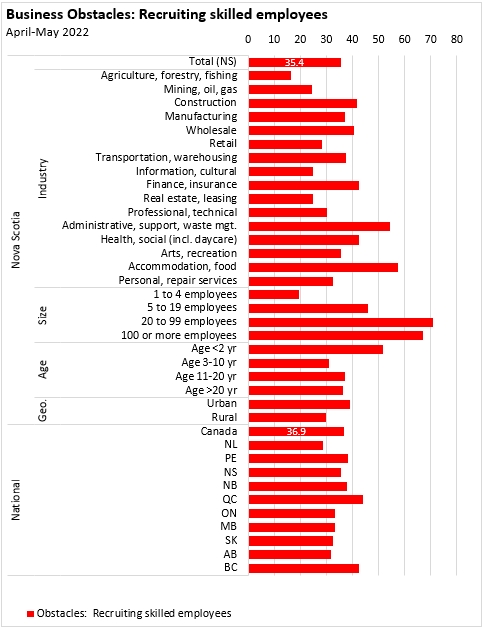
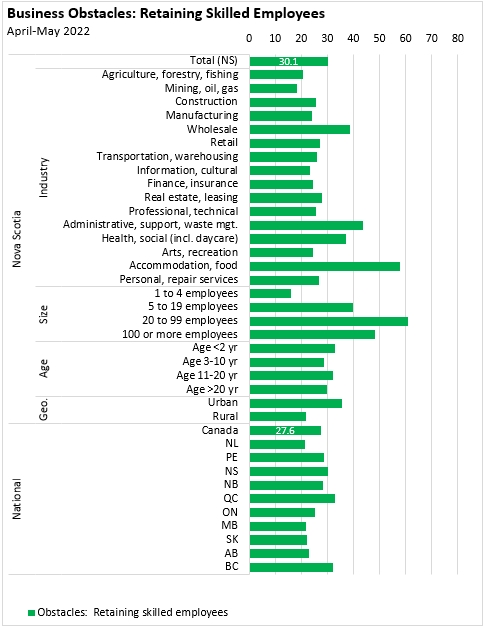
Insufficient demand (8.7%) and increasing competition (13.5%) were less commonly cited as obstacles for Nova Scotia businesses than fluctuating demand (17.4%).
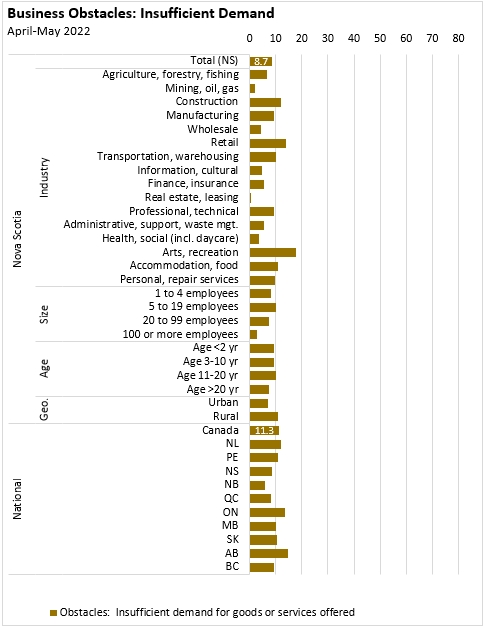

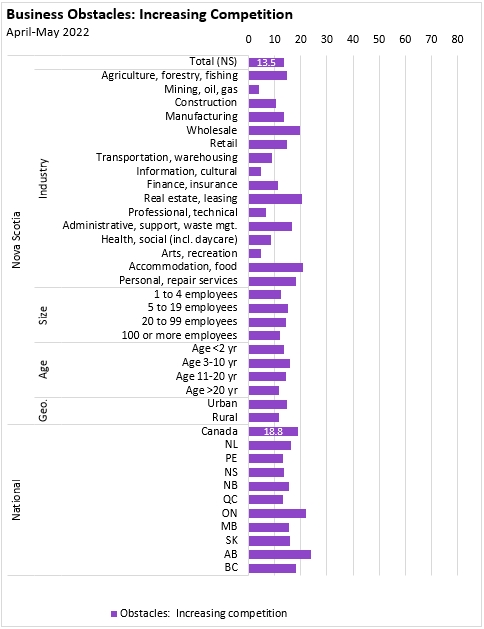
Travel restrictions are becoming a less significant business obstacle - cited by just 7.7% of Nova Scotia respondents.
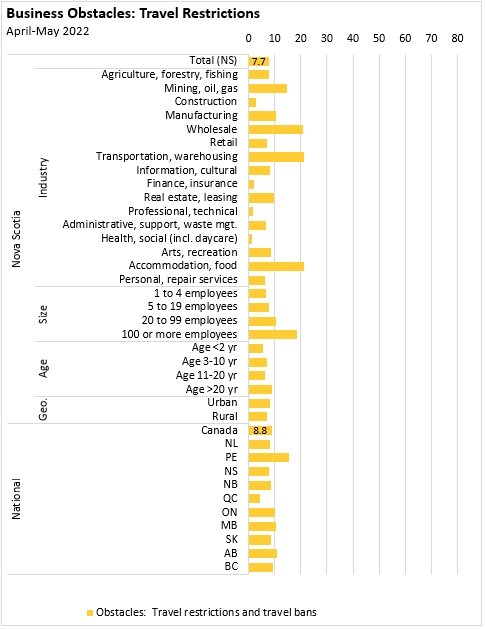
Managing cash flow and debt management (20.3%) were more substantial obstacles for Nova Scotia businesses compared with financing (9.1%).
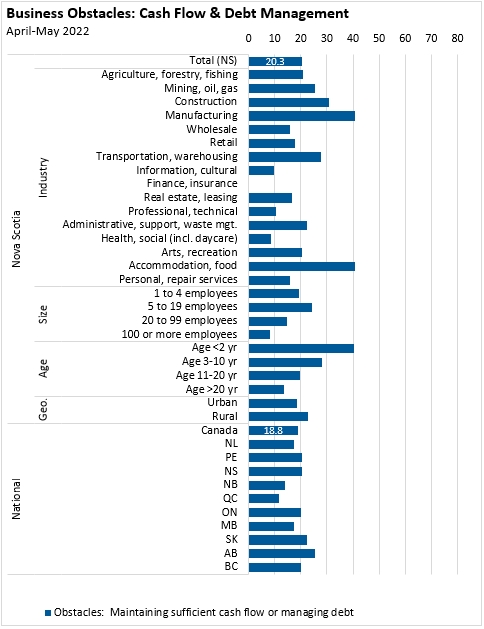
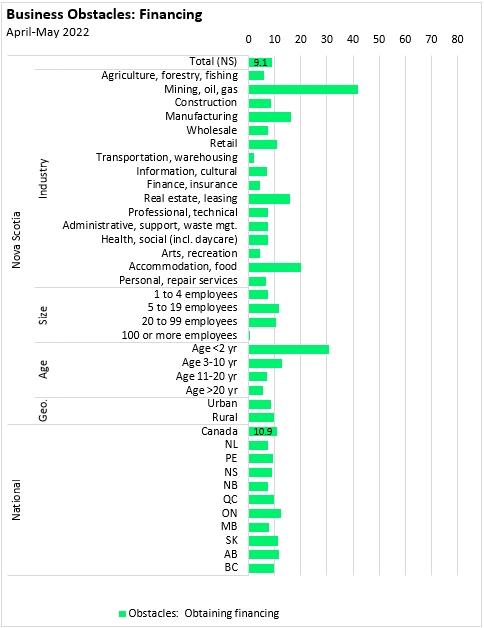
Supply chain challenges
In the last 3 months, 57.7% of Nova Scotia businesses reported worsening supply chain conditions while 40.0% reported no changes.
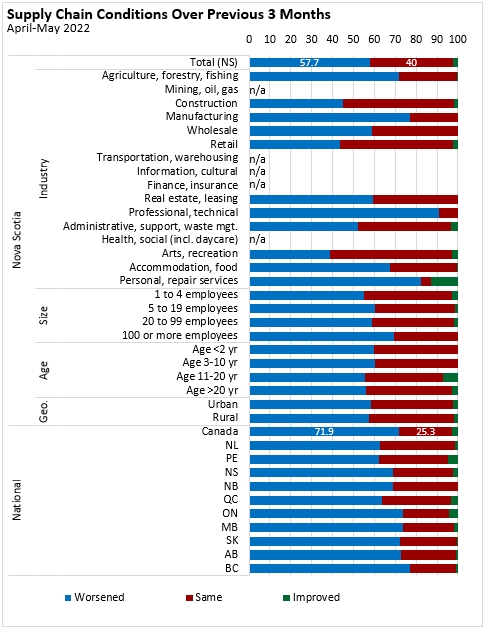
Among the more commonly-noted approaches to managing supply shortages were: seeking new suppliers (27.1% of Nova Scotia businesses) and improving timelines in collaboration with suppliers (33.5%). Investments in technology (13.1%) and research and development (7.7%) were less commonly cited as solutions for supply chain challenges.
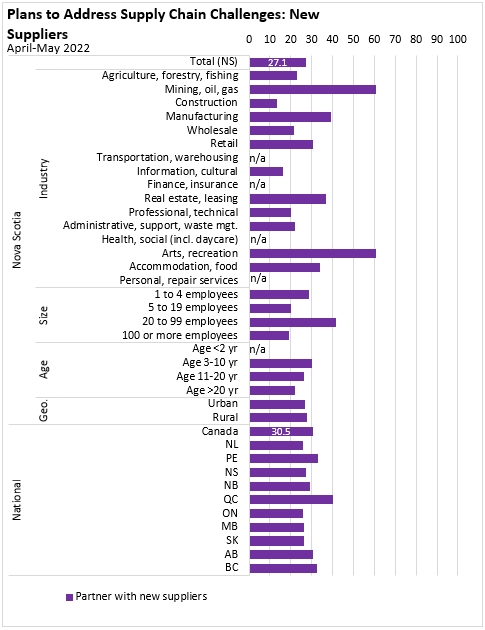
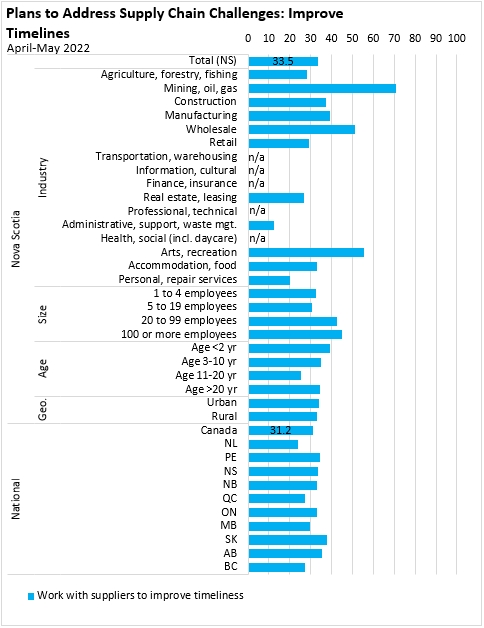
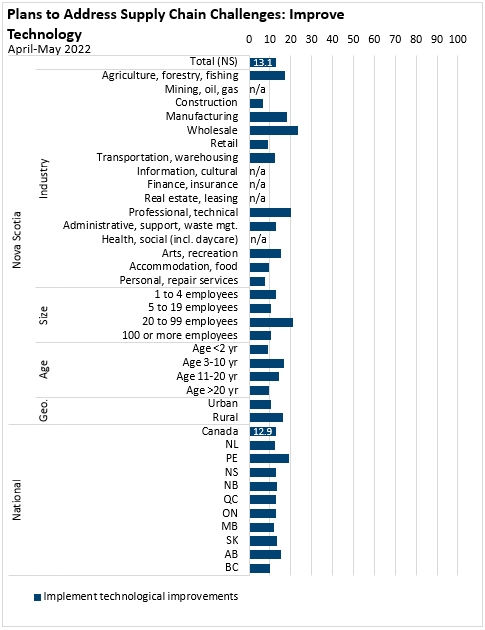
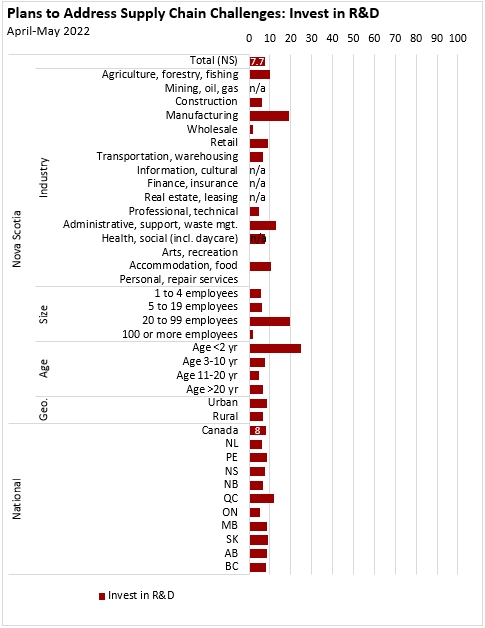
However, about one in five businesses in Nova Scotia had no plans to address supply chain challenges.

On-site and remote work
Greater use of remote and work-from-home labour may also play a role in addressing labour obstacles.
Nova Scotia businesses report that 84.6% of workers will be exclusively or mostly on-site while 8.0% will carry out mostly or exclusively remote work and 7.3% of workers will be split between on-site and remote work. Off-site or hybrid work arrangements appear more prevalent in professional/technical services, real estate/leasing, information/culture and mining/oil/gas industries.

Rising costs and prices
Over half (54.9%) of Nova Scotia businesses expect that inflation will become a bigger issue in the next 12 months. This was more common among accommodation/food industries as well as administrative/support industries.
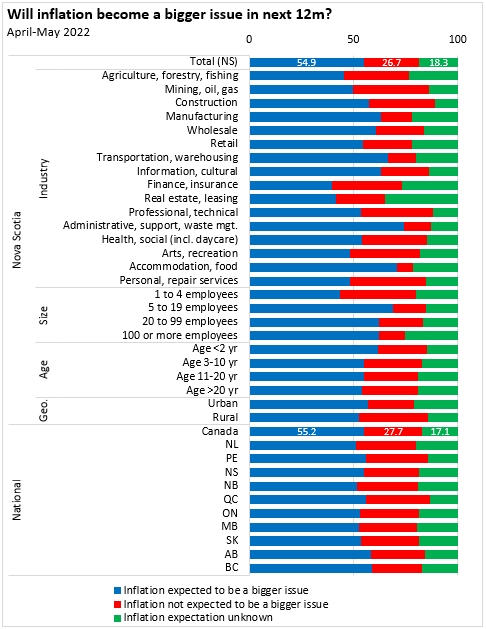
Changing business practices
In light of business obstacles and expectations, some businesses are considering changing their business models and products/offerings. Improving (21.6%) or expanding (14.2%) products or service offerings were the most common responses. Adoption of automation/technological solutions (5.4%), reducing product offerings (3.7%) or moving online exclusively (0.7%) were much less commonly cited changes to business practices.
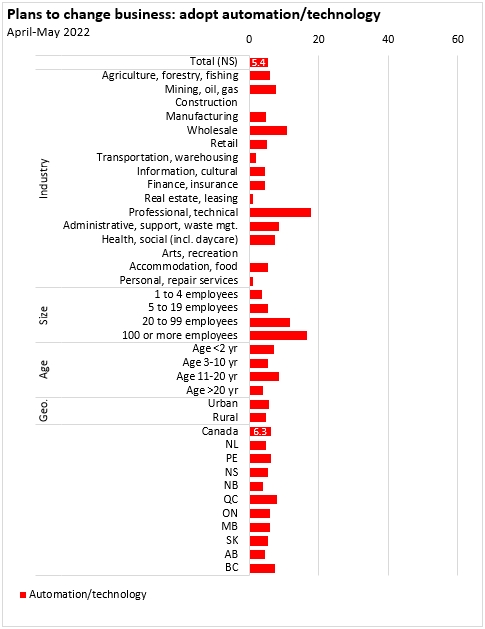
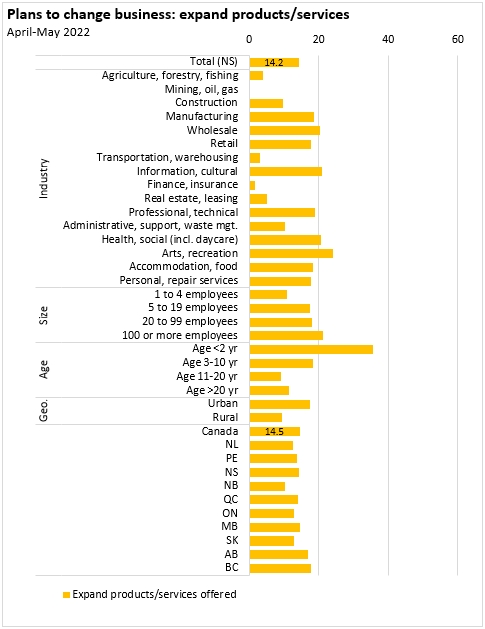
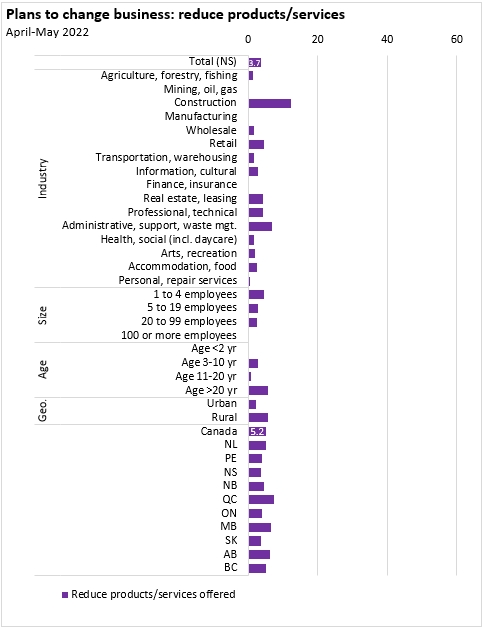
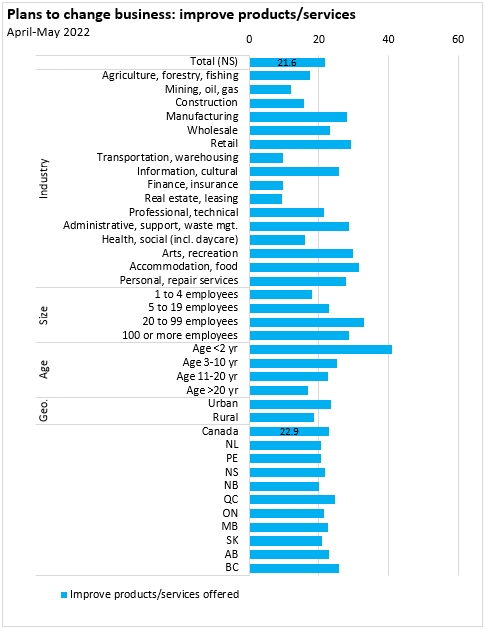
Plans for sale/closure, expansion, restructuring
79.4% of Nova Scotia businesses have no plans to sell, transfer or close their business in the next 12 months while 5.8% plan to sell, transfer or close the business (14.8% have unknown plans about sale/transfer/closure).
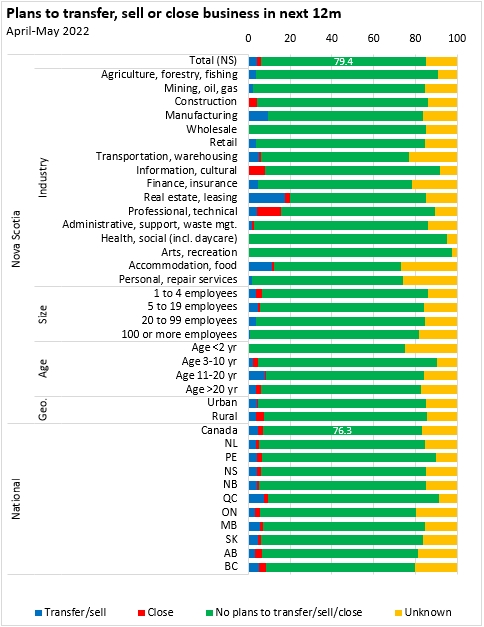
60.6% of Nova Scotia businesses have no plans to expand, restructure or change the business through merger with, acquisition of or investment in another business.
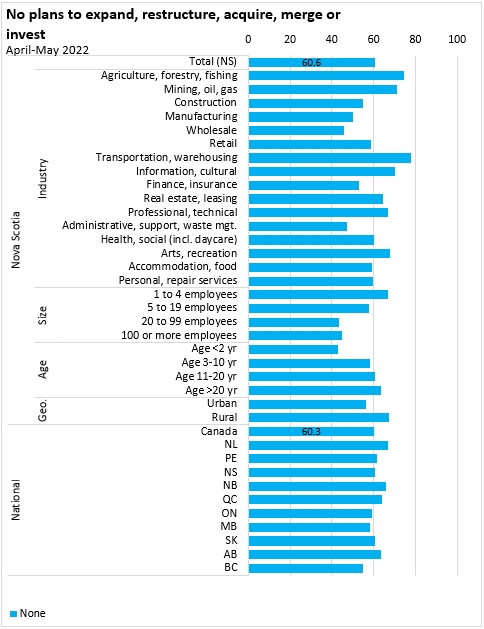
19.9% of Nova Scotia businesses have plans for expansion while 6.9% plan to restructure and 4.8% plan to merge with, invest in or acquire another business.


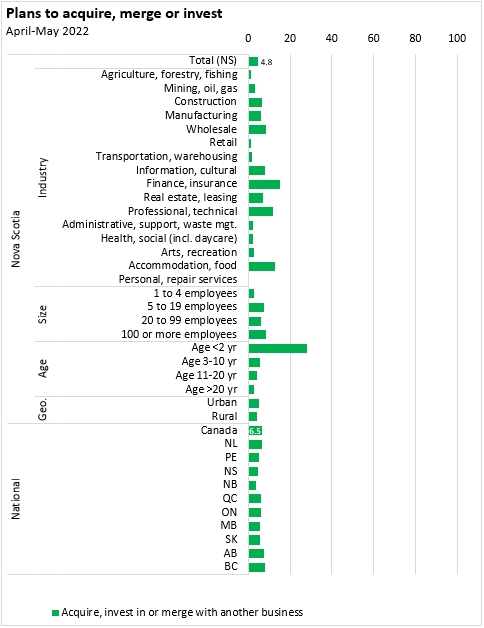
Capacity for more debt
47.4% of Nova Scotia businesses report being able to take on more debt while 32.5% report being unable to take on more debt.
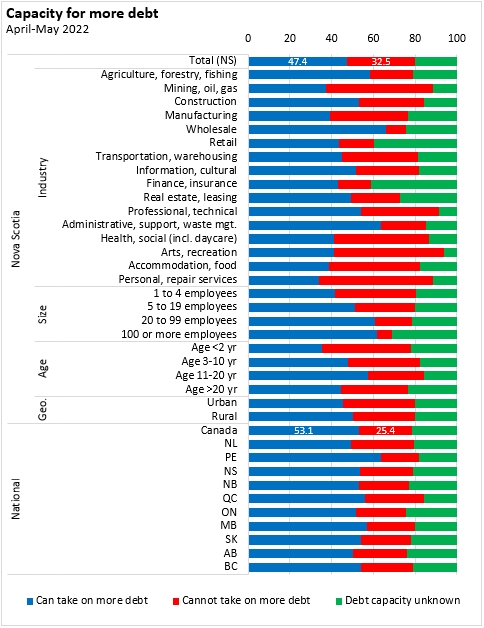
Source: Statistics Canada. Table 33-10-0503-01 Business or organization expectations over the next three months, second quarter of 2022; Table 33-10-0504-01 Business or organization obstacles over the next three months, second quarter of 2022; Table 33-10-0505-01 Business or organization expected impacts of labour-related obstacles over the next three months, second quarter of 2022; Table 33-10-0508-01 Business or organization change in supply chain challenges over the last three months, second quarter of 2022; Table 33-10-0509-01 Business or organization expectations of change in supply chain challenges over the next three months, second quarter of 2022; Table 33-10-0511-01 Business or organization plans to adjust supply chain over the next 12 months, second quarter of 2022; Table 33-10-0513-01 Plans to expand or restructure business or organization or acquire other businesses or organizations over the next 12 months, second quarter of 2022; Table 33-10-0515-01 Business or organization expectations of increases in energy expenses over the next three months, second quarter of 2022; Table 33-10-0517-01 Changes business or organization plans to make over the next 12 months, second quarter of 2022; Table 33-10-0526-01 Ability for the business or organization to take on more debt, second quarter of 2022; Table 33-10-0528-01 Average percentage of workforce anticipated to work on-site or remotely over the next three months, second quarter of 2022; Table 33-10-0529-01 Business' or organization's current overall position compared with 2019, second quarter of 2022
<--- Return to Archive